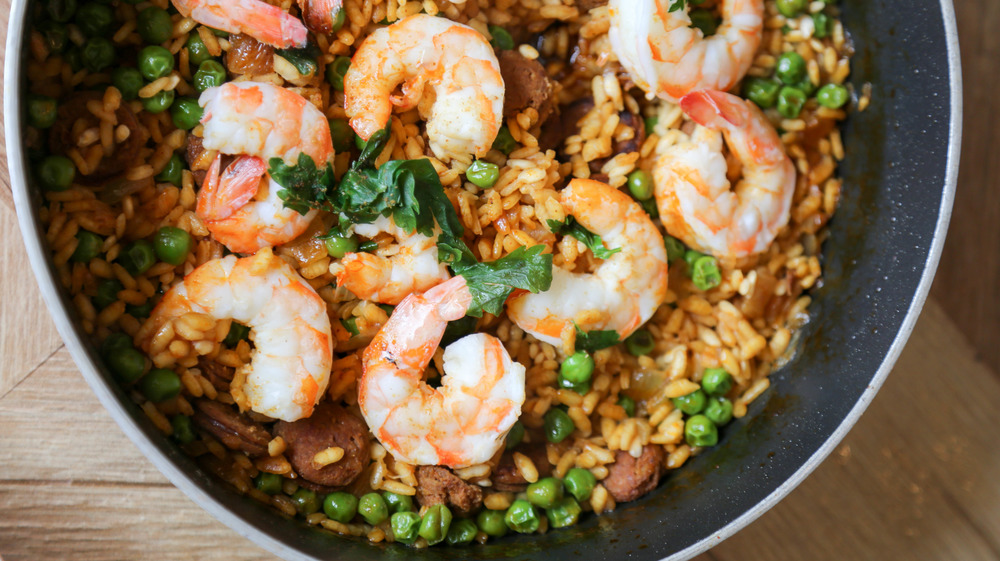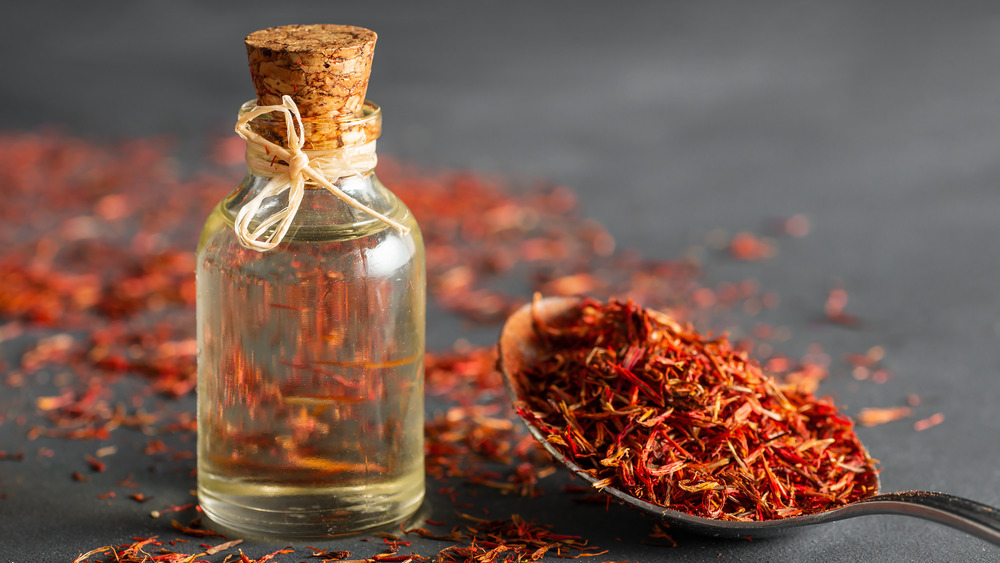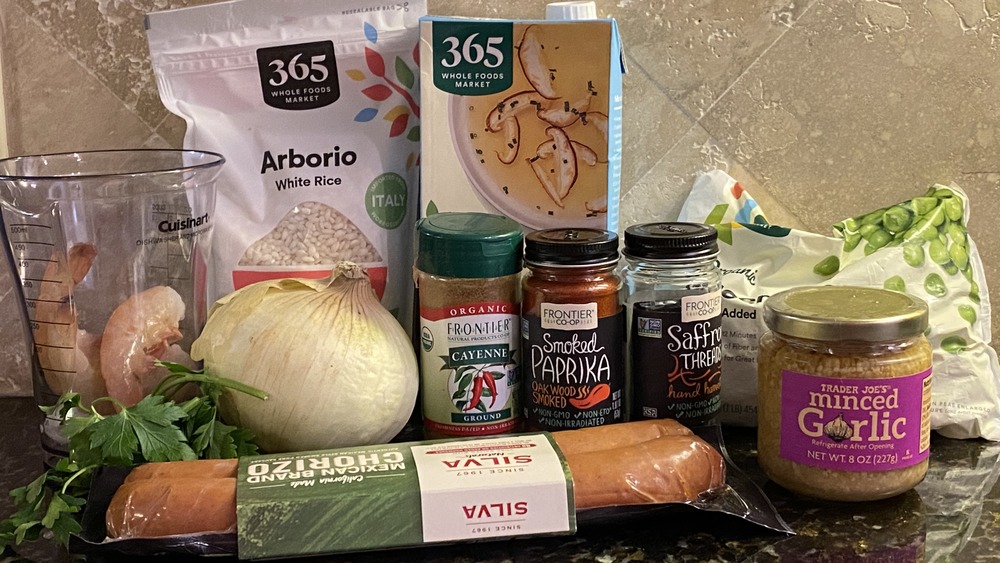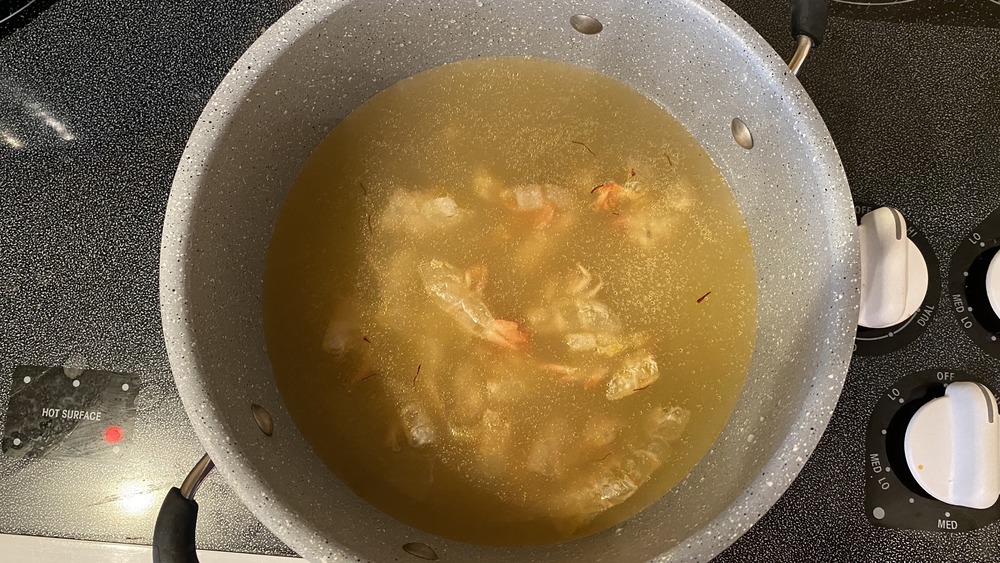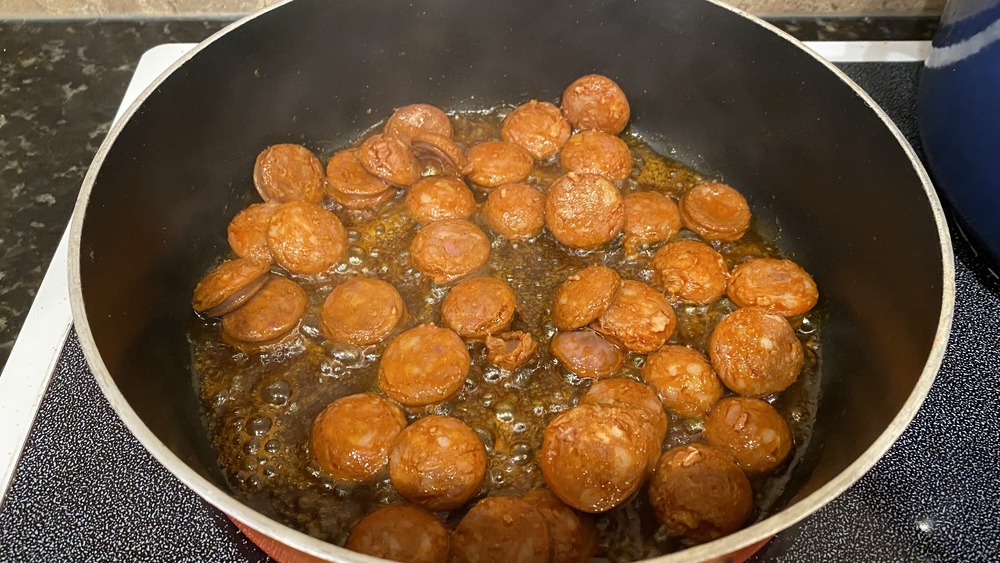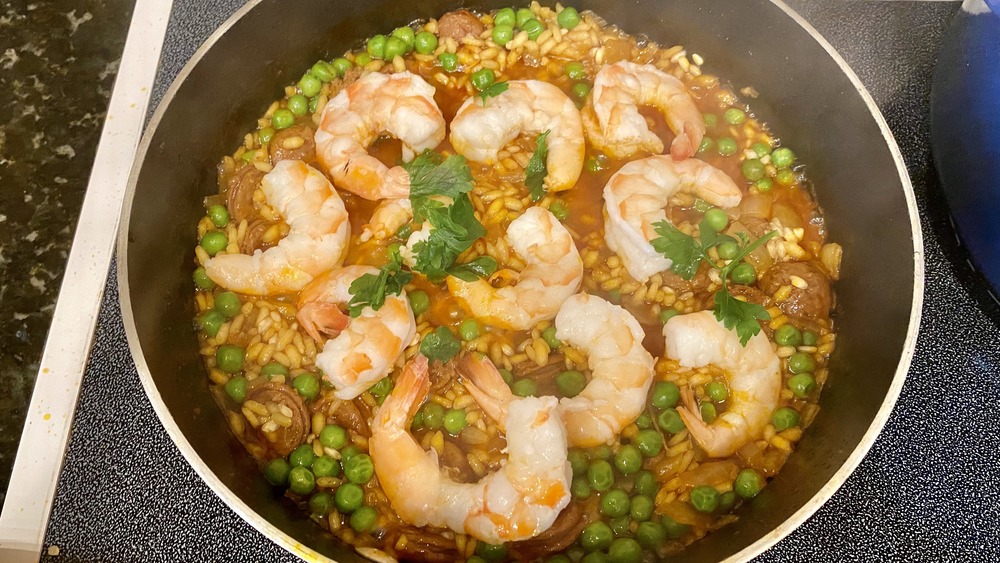Paella Recipe
According to Saveur, paella is a dish that's uniquely hard to define, though it has a few central hallmarks. It's most often served with yellow rice, some sort of meat, and must include saffron. This means you're going to be investing in some saffron, which is, quite literally, worth its weight in gold. But when you try a bite of this classic paella recipe, you'll see that it was money well spent. Especially when your dinner guests respond to your culinary masterpiece. "I love making paella because it's always an impressive crowd pleaser," says chef and recipe developer Maren Epstein of Eating Works.
As it happens, paella has been pleasing crowds for hundreds of years. According to The Paella Company, the dish originated in Valencia, a port city on the eastern coast of Spain. The rice used in the dish was brought to the Iberian Peninsula by the Moors, saffron came from the Middle East or North Africa, and of course, the seafood came from the waters nearby.
The word "paella" itself is from the traditional Valencian language — which is distinct from Spanish — and refers to the large pan in which the dish was traditionally prepared over open fires. For our purposes, we'll be using a stovetop and taking a note from Epstein, who says to "make sure to use a nonstick pan so that the rice doesn't burn."
That would be one expensive mistake indeed, given the inclusion of saffron and other delicious ingredients.
Why is saffron so expensive?
"Saffron is an essential part of this recipe," says Epstein "but it is very expensive and may not be in the budget for this one. I decided to splurge and go for it since saffron is a quintessential part of paella. That being said, you can use turmeric instead." Sure, there are some things that kind of act as a substitute for saffron, but take another look at your budget and see if you can't spare a few extra dollars for genuine saffron, anyway. Nothing quite compares to its unique, slightly sweet flavor.
But why is it so expensive, anyway? According to Business Insider, it takes "170,000 flowers to create just one pound of saffron." Not only that, but the flowers must be hand-picked over the course of just a few weeks in the year and even have to be plucked off the plant at the right time of day. This ultimately means that the spice is rare, low-yield, and very, very labor-intensive. So, yes, it is therefore pretty expensive, but thankfully the flavor of saffron can go a pretty long way. Plus, when you bite into some paella made with the real deal, you'll know that it's worth every dollar.
Gather your ingredients for paella
For this authentic take on Spanish paella, you'll need 1 ½ cups of shrimp, peeled and deveined, and make sure you save the shells. You will also need to secure 2 tablespoons of olive oil, divided, ½ a teaspoon of saffron, 1 teaspoon of salt, 3 cups of chicken stock, 10 ounces of chorizo sausage, sliced, 2 cups of diced onion, a ½ teaspoon of garlic, chopped, 1 teaspoon of smoked paprika, 1 ¼ cups of Arborio rice, 1 cup of peas (defrosted and warmed if you are using frozen), and 1 pinch of cayenne pepper.
And as noted, you can substitute turmeric for the saffron and your paella will still taste great, though careful tasters might miss the flavor of saffron.
Cook the shrimp and make the paella stock
Peel and devein the shrimp, then sauté the shrimp and the shells in a small stockpot with a tablespoon of olive oil, ½ a teaspoon of salt, and the saffron. Cook until the shrimp is pink throughout and the shells have turned pink as well. Now remove the cooked shrimp and set it aside. Remember to watch the shrimp carefully and don't let it overcook, as few people indeed really want rubbery shrimp. If you don't have shrimp with shells, by the way, you can also add in some fish stock next to amp up the seafood flavor in its place. Really try to get shrimp with the shells still on though, as Epstein says it's "a flavor game changer."
Next, add the chicken stock to the pot with the shells and spices and let it simmer uncovered for 20 minutes. Strain the shells out and discard them. At the end of the simmer, you should have two cups of stock left, and flavorful stock at that.
Cook the sausage, onion, and garlic
Heat the remaining tablespoon of olive oil in a large non-stick skillet. You will need a pan that can accommodate all of your ingredients and some stirring to boot, so make sure to use a capacious pan here that can contain everything comfortably.
Add the chorizo and sauté it until the fat is rendered, which will take about 5 minutes. Then add the onion, garlic, salt, and paprika, and cook the meat and veggies for another 5 minutes until the onion softens and the garlic has grown fragrant. The kitchen, in general, will be smelling pretty great by now, if not the whole house.
Cook the rice for paella, then add the peas and shrimp
Add the rice in with the chorizo, onion, and garlic, and sauté until it has absorbed all of the oil and fat. Now pour in the prepared stock and simmer for 12 minutes, stirring occasionally. "I like to stir so the rice doesn't stick to the bottom of the pan while other people would consider it a cardinal sin to stir rice," says Epstein. Your call on that one, but when in doubt, you should probably give it a stir or two.
Once the rice has softened, add peas to the pan and stir them in. Next place the shrimp on top of the other ingredients and cook, covered and at medium heat, for 3 minutes. Finally, season your paella with cayenne pepper as preferred and then enjoy.
Paella
Paella has been pleasing crowds for hundreds of years, and for good reason. Here's how to make this rice and seafood-rich treat in your own home kitchen.
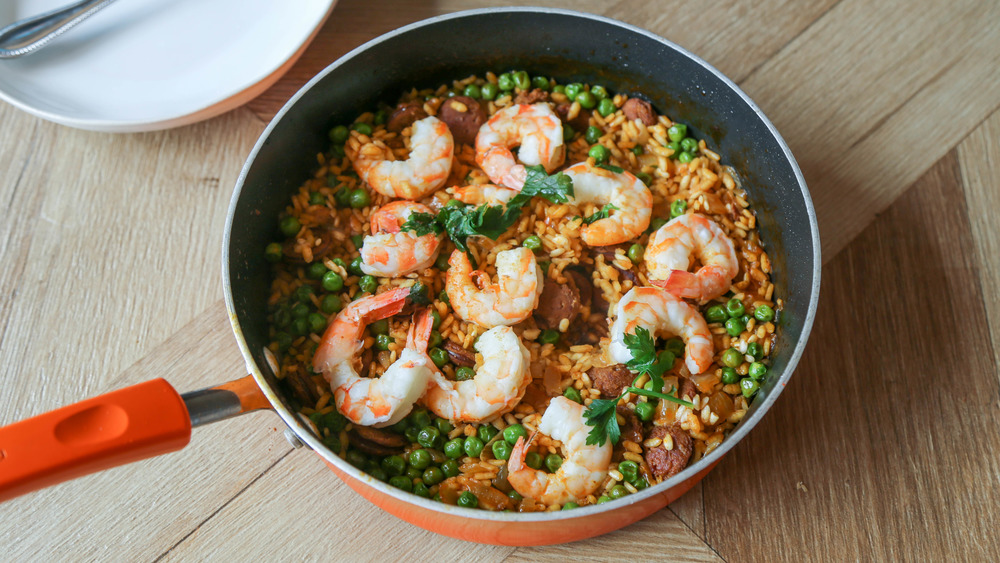
Ingredients
- 1 ½ cups shrimp, peeled, deveined (save shells)
- 2 tablespoons olive oil, divided
- ½ teaspoon saffron
- 1 teaspoon salt
- 3 cups chicken stock
- 10 oz chorizo, sliced
- 1 onion, diced (2 cups)
- ½ teaspoon garlic, chopped or jarred
- 1 teaspoon smoked paprika
- 1 ¼ cups Arborio rice
- 1 cup peas
- 1 pinch cayenne pepper
Directions
- Peel and devein the shrimp, reserving shells.
- Sauté the shrimp and shells in a small stockpot with olive oil, ½ teaspoon salt, and saffron until the shells turn pink and the shrimp is cooked.
- Remove shrimp and set aside, then add the chicken stock and simmer uncovered for 20 minutes. Strain the shells out and set them aside. You should have two cups of stock left
- Heat oil in a large non-stick skillet, then add chorizo and sauté until the fat is rendered, about 5 minutes.
- Add the onion, garlic, paprika, and salt. Cook for another 5 minutes until the onion softens.
- Add the rice and sauté until it has absorbed all of the oil and fat.
- Add rice to the stock and simmer for 12 minutes, stirring occasionally.
- Add peas and stir them in, then place shrimp on top of the rice and cook covered for 3 minutes.
- Season with cayenne pepper and enjoy.
Nutrition
| Calories per Serving | 779 |
| Total Fat | 37.3 g |
| Saturated Fat | 12.0 g |
| Trans Fat | 0.0 g |
| Cholesterol | 188.7 mg |
| Total Carbohydrates | 69.6 g |
| Dietary Fiber | 5.0 g |
| Total Sugars | 8.0 g |
| Sodium | 1,556.3 mg |
| Protein | 38.4 g |
